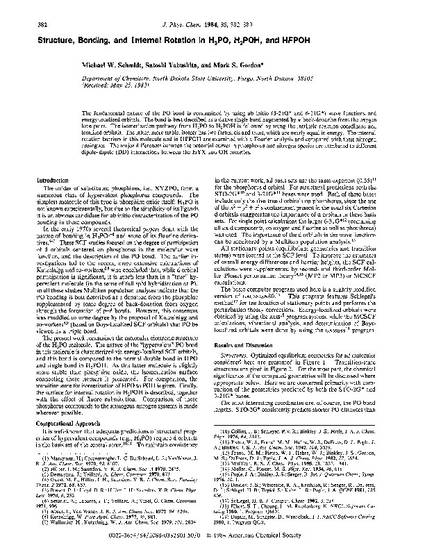
The fundamental nature of the PO bond is reexamined by using ab initio (3-21G* and 6-31G*) wave functions and energy-localized orbitals. The bond is best described as a dative single bond augmented by 71' back-donation from the oxygen lone pairs. The isomerization pathway from H3PO to H2POH is followed by using the intrinsic reaction coordinate and localized orbitals. The latter, more stable, isomer has two forms, cis and trans, which are nearly equal in energy. The internal rotation barriers in this molecule and in HFPOH are examined with a Fourier analysis and compared with their nitrogen analogues. The major differences between the potential curves in phosphorus and nitrogen species are attributed to different dipole-dipole (DD) interactions between the HYX and OH moieties.
Available at: http://works.bepress.com/mark_gordon/37/
